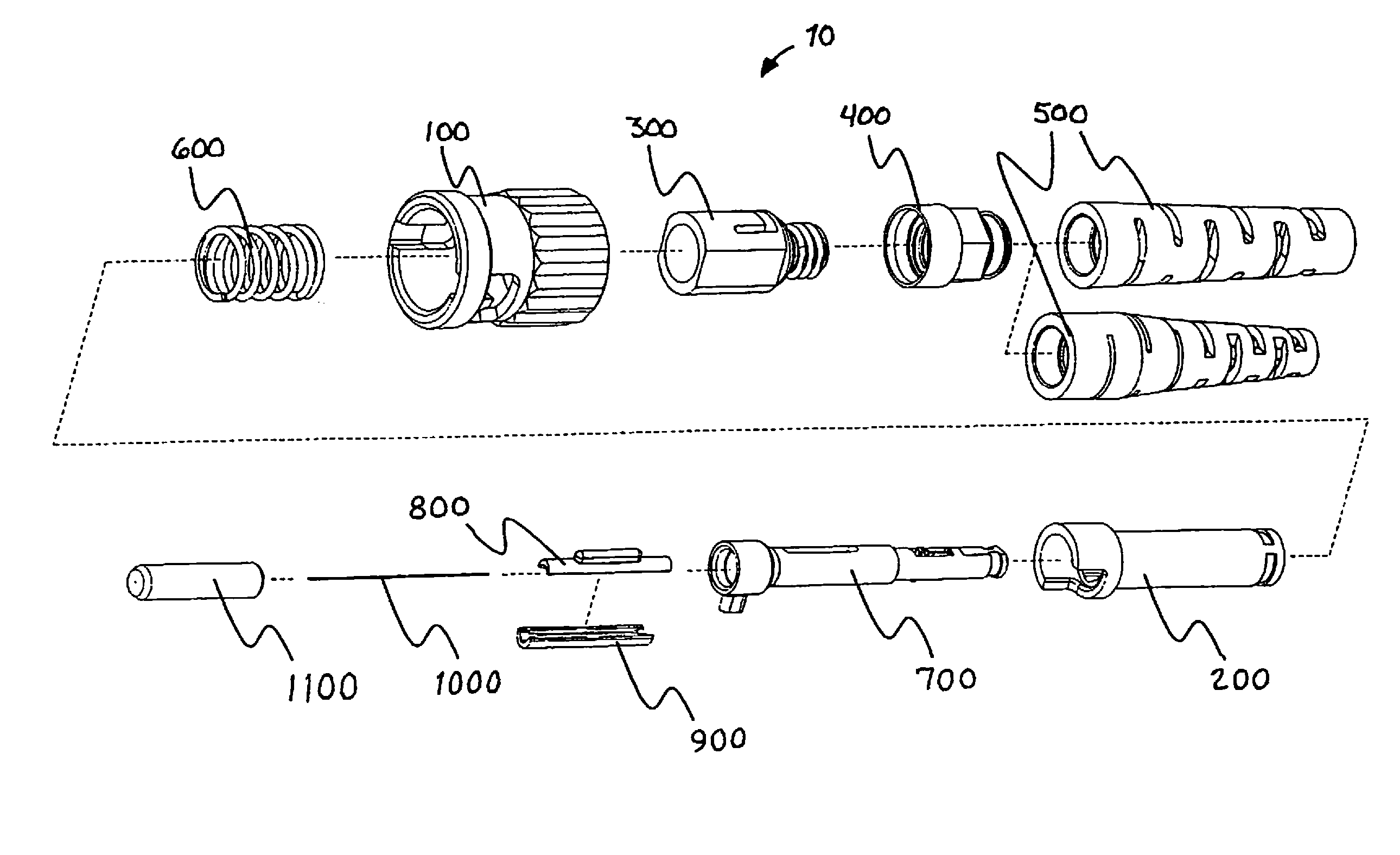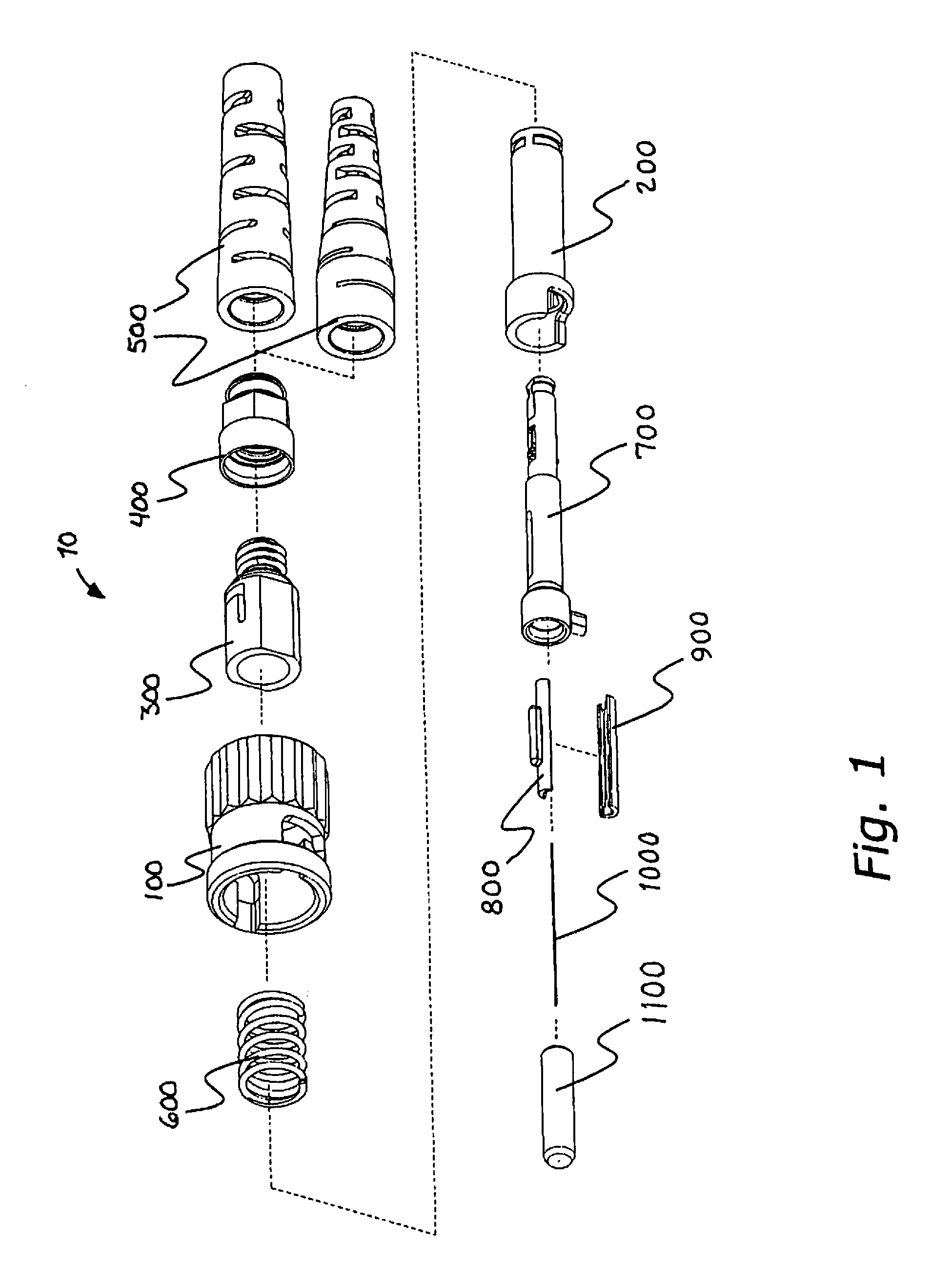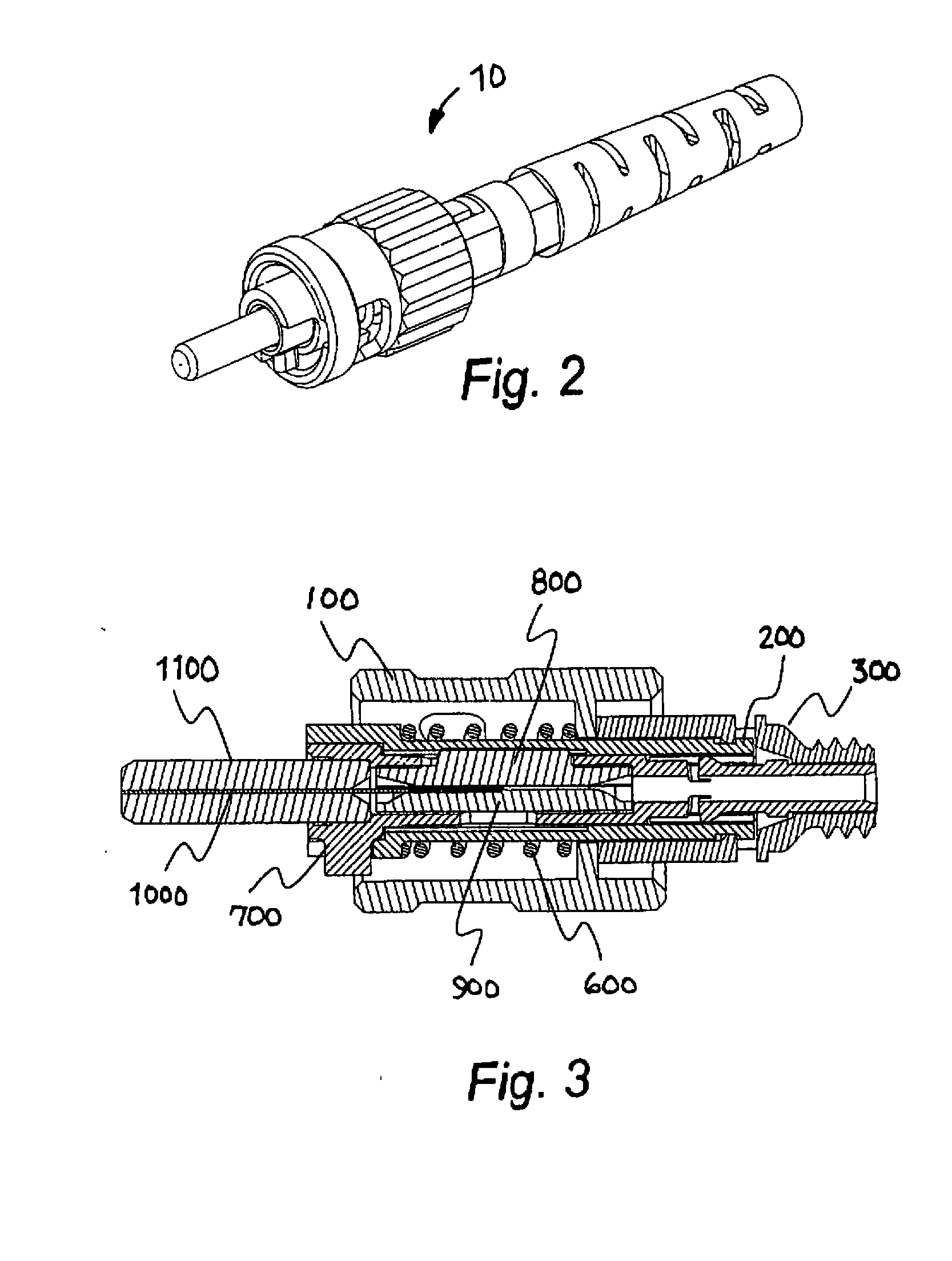Activation Tool for a Fiber Optic Connector
a technology of activation tool and fiber optic connector, which is applied in the direction of optics, instruments, optical light guides, etc., can solve the problems of difficult and critical termination of fiber optic cables and connections, difficult and time-consuming end face polishing, and high labor intensity of field installation of standard “pot and finish” fiber optic connectors, etc., to achieve the effect of quick and positive termination
- Summary
- Abstract
- Description
- Claims
- Application Information
AI Technical Summary
Benefits of technology
Problems solved by technology
Method used
Image
Examples
Embodiment Construction
[0061]FIGS. 1-3 show an exemplary re-terminable fiber optic connector 10 in exploded, assembled and cross-sectional views. Connector 10 includes a bayonet 100, cam 200, backbone 300, retaining nut 400, strain relief boots 500, compression spring 600, ferrule holder 700, cam plank 800, Vee-plank 900, optical fiber stub 1000, and ferrule 1100. Connector 10 is designed to be terminated, for example, using either buffered optical fiber or jacketed optical fiber cable with an aramid fiber strength member. This particular exemplary optical connector is a no-crimp design in which rotation of cam 200 is used to activate or deactivate termination of the fiber in the connector. Rotation is preferably achieved using a cam activation tool, an example of which will be described later with reference to FIGS. 27-40.
[0062]Bayonet 100 provides a gripping surface for users while also retaining backbone 300 and spring 600. Bayonet 100 latches to a mating adapter (unshown) as known in the art. Cam 200 ...
PUM
 Login to View More
Login to View More Abstract
Description
Claims
Application Information
 Login to View More
Login to View More - R&D
- Intellectual Property
- Life Sciences
- Materials
- Tech Scout
- Unparalleled Data Quality
- Higher Quality Content
- 60% Fewer Hallucinations
Browse by: Latest US Patents, China's latest patents, Technical Efficacy Thesaurus, Application Domain, Technology Topic, Popular Technical Reports.
© 2025 PatSnap. All rights reserved.Legal|Privacy policy|Modern Slavery Act Transparency Statement|Sitemap|About US| Contact US: help@patsnap.com



